Aluminium, steel, carbon fibre. All things you’d associate with building a car. Cardboard, Play-Doh and cake, perhaps not so much.
For some, though, conventional substances just won’t satisfy, with some engineers and design studios creating cars out of some seriously crazy materials. Whether it’s to help envision the vehicles of the future or just for a bit of fun, check out some of the best cars made from the strangest things.
Lexus IS – cardboard
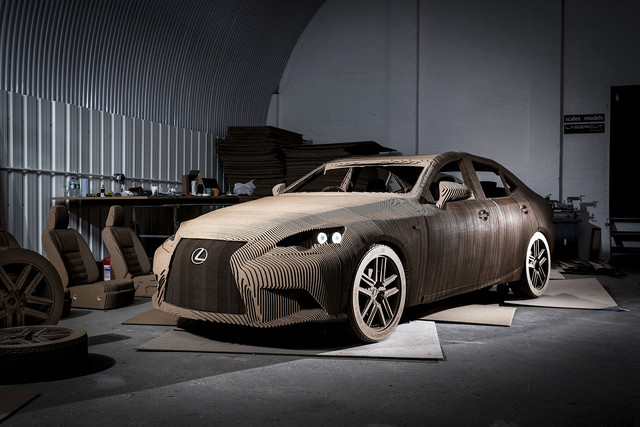
Created to go on display at the Grand Designs live show in Birmingham this month, Lexus made this unique one-off ‘origami’ version of its latest IS saloon from more than 1,700 sheets of cardboard.
Built on a steel and aluminium frame, the cardboard car was masterminded by UK design specialists Lasercut Works, which digitally rendered a 3D model of the IS into 10mm-thick slices, each of which received its own reference number.
Assembled totally by hand using and a water-based glue, the cardboard IS features everything, from the largest panels to the smallest interior details like cup holders rendered in cardboard. It even comes with its own small electric motor, meaning that it can actually be driven!
BMW Gina – spandex
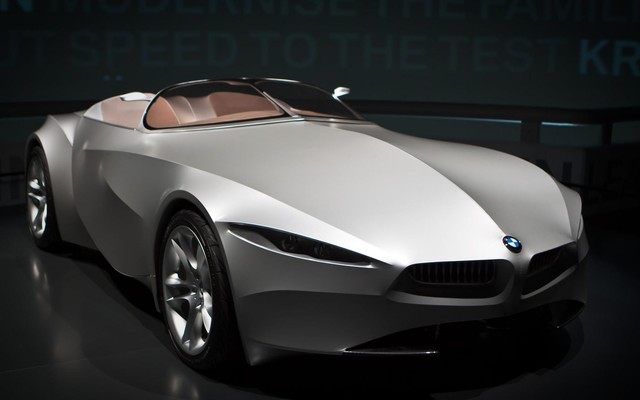
Concept cars allow automotive designers a chance to let their imaginations run wild, often with results that can only be described as weird and, occasionally, wonderful.
But even by that measure, in the Gina, BMW created a concept car that was as strange as it was innovation, complete with a shape-shifting fabric body and spandex exterior panels.
A body of seamless fabric was stretched over a movable metal frame, which allowed the driver to change the shape of the car at will. Fitted with a working powertrain and fully driveable, the Gina could “grow” a rear spoiler for stability at higher speeds, and engine access was granted through a slit that opened in the bonnet.
Inside, the steering wheel sat in an ‘idle’ position when it was parked, before descending and assuming their correct positions when the driver pressed the start button.
DeLorean DMC-12 – stainless steel
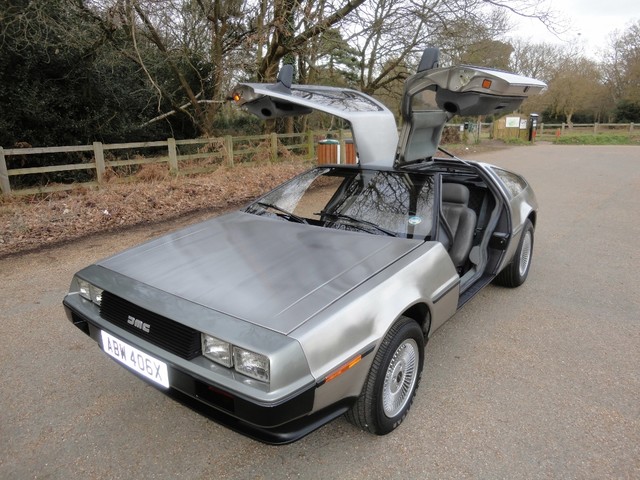
When the iconic DeLorean DMC-12 first made its debut as a prototype back in 1976, the sound of unpainted brushed stainless steel panels for its body sounded terrifically exotic.
It didn’t take long for people to realise the challenges that a raw steel exterior would pose though, with repair and restoration particularly tricky due to the solid nature of the material and the difficulty matching the grain of the brushed finish.
DeLorean had actually envisioned that any drivers who damaged their cars would simply strip the panel that was dented off and replace it with a new one. As a result, and despite the fact that the car hasn’t been in production for 32 years, there are still decades’ worth of surplus steel panels available on the market.
SEAT Mii – lace
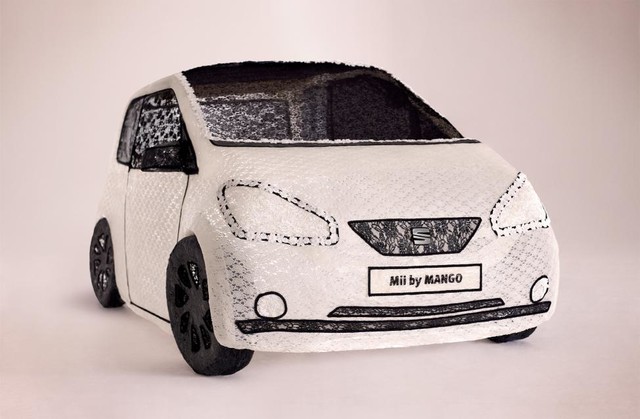
Last November, SEAT unveiled the world’s first fabric car in celebration of the UK release of its special edition Mii by MANGO city car.
Constructed from a total of 55 metres of cotton lace, with a few jewelled embellishments for good measure, everything from windscreen to wheels was woven by an eight-person team led by designer Ashley Joiner.
An additional 70 metres of lace was then used to trim the Mii replica and finish it off, with the entire project taking a total of three days to complete and 20 kilos of resin to hold the entire thing together.
Ford prototype – hemp
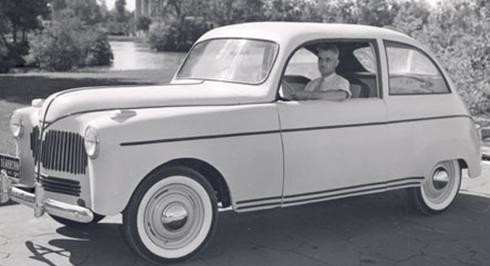
Decades before eco-conscious cars were in vogue, Henry Ford, father of the assembly line, toyed with the idea of making a vehicle from hemp, which he proclaimed would be the car of the future.
As it turns out, Henry loved farmers and wanted to help struggling agriculturalists during the Great Depression. Making cars out of fast-growing farm products, like hemp, would benefit Americans twofold by being more affordable and also buoying up the farming industry.
According to the December 1941 edition of Popular Mechanics, Ford created a prototype car, also known as the Soybean Car, that was “grown from the soil”, featuring hemp-derived plastic panels that were 10 times stronger than steel.
Unfortunately, hemp was outlawed in the US in 1937, reportedly due to the potentially damaging effect it would have on the coal, oil, paper and synthetic fibre industries, and Ford’s plant-derived concept was forever shelved.
Chevrolet Orlando - Play-Doh
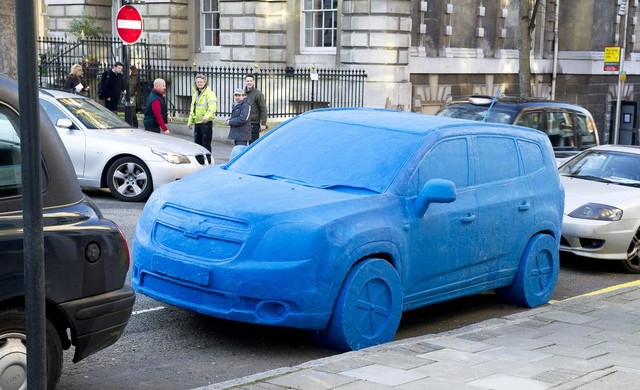
Chevrolet created a unique life-sized replica of its Orlando seven-seater SUV using record-smashing amounts of Play-Doh modelling clay back in 2011.
The bright blue Orlando was sculpted from one and a half tonnes of the children’s putty, and took eight model makers a total of two weeks to make using 10,000 pots of the stuff – about £6,000 worth.
Clocking in at 4.6m long, the model Orlando was on display in London’s bohemian Clerkenwell district, with Chevrolet claiming the idea stemmed from a poll that showed that Play-Doh was the UK’s best-loved childhood toy.
Skoda Fabia – cake
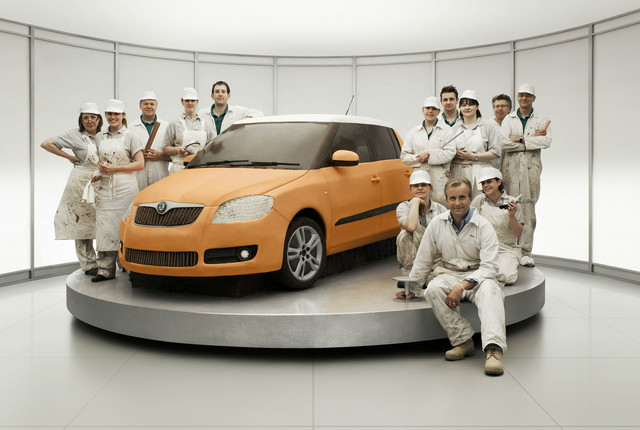
One of the most easily recognisable (and hunger pang-inducing) car adverts of recent years,
Constructed at Shepperton Studios, it took a team of eight bakers 10 days to make, with the basis of the chassis built up from sponges and the moulded parts of the bodywork made from Rice Krispies. The headlight covers were then made from glacier mints, while red jelly served as the brake lights and, finally, the engine and wing mirrors were constructed from marzipan.
According to estimates, the whole project took around £500,000 to make – the equivalent cost of 62 actual Skoda Fabias – while Julie Andrews reportedly gave her personal approval for Skoda to use ‘My Favourite Things’ for the soundtrack.
So what happened to the cake? Unfortunately, by the time the cake had finished filming it wasn’t thought fit for human consumption and as a result the entire car ended up in a compost heap, except for the marzipan wing mirrors which were kept for posterity.



